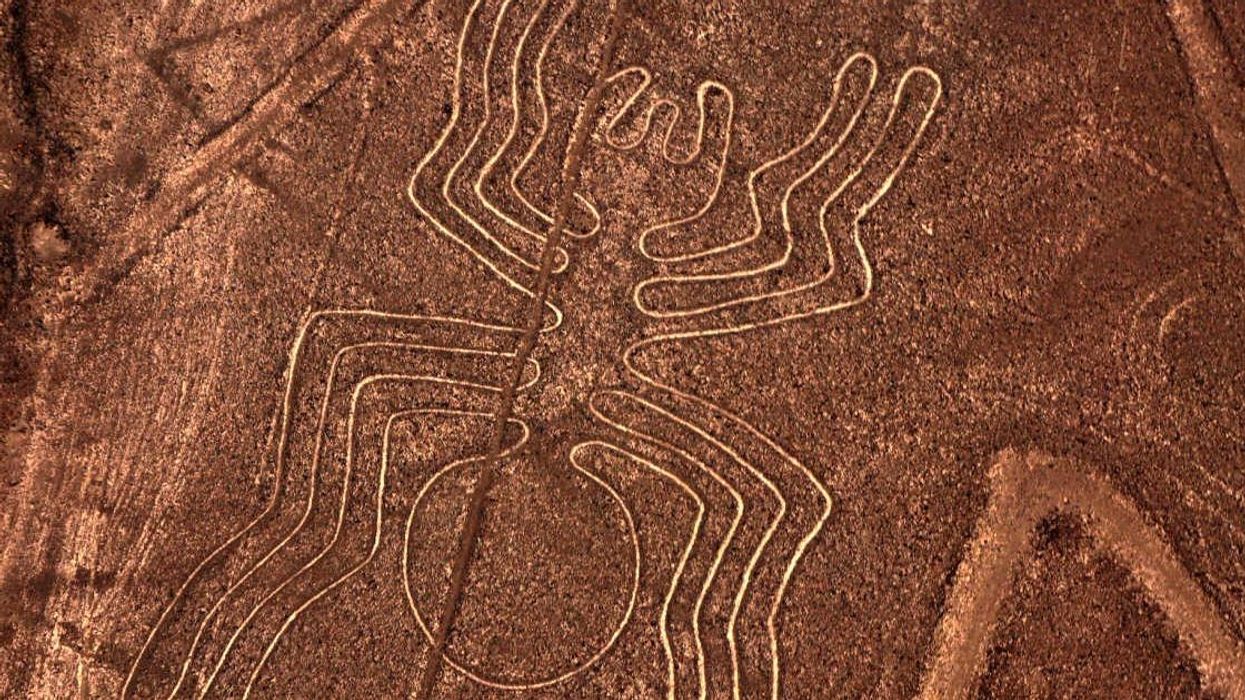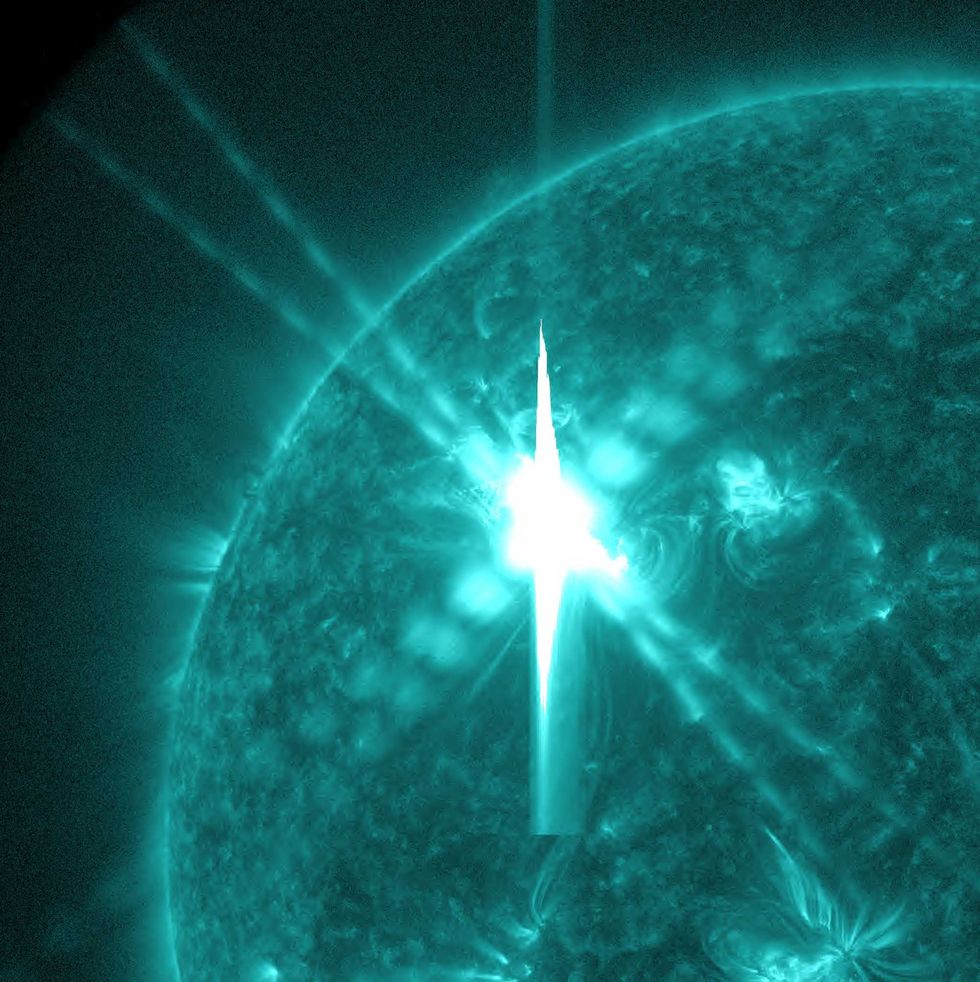Spanning an area of more than 75,000 hectares, the Nazca Lines, located in the Peruvian coastal plain, is one of the driest places on Earth. It hardly rains here. The vast, arid desert floor here is covered by a blanket of pebbles coated in iron oxide, which gives them a rusty-red color. Beneath the pebbly covering is a layer of yellow-white-colored soil. As weird as it may sound, the ancient Nazca people used the difference in the color of these soil layers to create some of the world’s most stunning artworks, now known as “geoglyphs.” In the past century, archaeologists unearthed a total of 430 geoglyphs etched into this desert. In a recent study published in the journal PNAS, Japanese archaeologists employed artificial intelligence (AI) to discover 303 new geoglyphs in just six months.

“Geoglyphs are motifs created on the ground by manipulating surface stones or gravel and are found throughout the Nazca Pampa,” study authors explain in the paper. “They provide archaeologists with a unique window into the cultures and beliefs of the ancient people who started to use them at least 2000 years ago.” According to HISTORY, there are three basic types of Nazca Lines including straight lines, geometric designs, and pictorial representations. These doodled lines were first spotted by a group of Peruvian aviators while they were flying above the desert in the 1930s. Since 2004, some Japanese scientists have been striving to discover more of these doodles hidden in the desertscape. Their hypothesis proved to be correct as a team led by Masato Sakai from Yamagata University discovered these new 303 doodles scrawled on the desert floor.
Speaking to El Pais, Sakai said that previously only a small, northern portion of the desert had been investigated, while he and his team were sure that there were hundreds more relief-type figurative geoglyphs scattered throughout the sun-baked plain. So they contacted IBM’s AI system. Using artificial vision with a resolution of up to a few centimeters per pixel, they examined high-resolution satellite images of Nazca taken by airplanes. When the machine identified approximately 1,300 figures, the team conducted a field investigation between September 2022 and February 2023.

According to their investigation, the new doodles uncovered by the machine revealed 50 line-type and 683 relief-type figurines. The array of geoglyphs included doodles of plants, birds, and wild animals. There were some creative yet sinister-looking figures too, such as humanoids, domesticated animals, decapitated heads, killer whales, two-headed snakes, etc, which gave scientists the clue that they were carved as part of some ancient ritual. “They are scenes of human sacrifice,” Sakai told El Pais. Sakai also proposed in the paper that the relief-type geoglyphs were distributed by ancient Nazca people walking on a trail. “These trails are winding and entangled, forming a meshwork with no obvious starting or ending point,” reads the paper.

The team also noted the estimated age of geoglyphs by analyzing the pottery shards found near some of the figures. “Previous field surveys suggest that the use of geoglyphs in the Nazca Pampa began by at least the 1st century BCE during the Initial Nasca period (100 BCE to 50 CE) and continued until the 15th century CE during the Ica period,” they wrote in the paper. The discovery of these new geoglyphs is of utmost importance for scientists and archaeologists curious to understand the rituals, cultures, ceremonies, and practices of ancient Nazca tribes.
David Beresford-Jones at the University of Cambridge told New Scientist that the AI screening process offers hope for discovering geoglyphs in the broader region beyond the Nazca lines. However, he said that speed is crucial because this treasure trove of geoglyphs “lies on the cusp of erasure through agricultural expansion, urban development and wind-power generation.”





















 A road near equatorial Atlantic OceanCanva
A road near equatorial Atlantic OceanCanva Waves crash against rocksCanva
Waves crash against rocksCanva
 Older woman drinking coffee and looking out the window.Photo credit:
Older woman drinking coffee and looking out the window.Photo credit:  An older woman meditates in a park.Photo credit:
An older woman meditates in a park.Photo credit:  Father and Daughter pose for a family picture.Photo credit:
Father and Daughter pose for a family picture.Photo credit:  Woman receives a vaccine shot.Photo credit:
Woman receives a vaccine shot.Photo credit: 
 Image artifacts (diffraction spikes and vertical streaks) appearing in a CCD image of a major solar flare due to the excess incident radiation
Image artifacts (diffraction spikes and vertical streaks) appearing in a CCD image of a major solar flare due to the excess incident radiation
 Brady Feigl in February 2019.
Brady Feigl in February 2019.
 Yonaguni Monument, as seen from the south of the formation.
Yonaguni Monument, as seen from the south of the formation. 